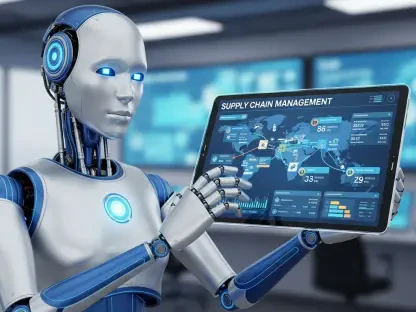The landscape of supply chain management is on the brink of a sweeping transformation driven by advancements in technology. In 2025, innovative solutions are expected to radically reshape how supply chains operate, making them more efficient, responsive, and intelligent. This article delves into the key technology trends and their practical implications for the future.
Revolutionizing Supply Chains with AI and Automation
One of the most significant trends is Agentic AI, which enhances autonomy in virtual workforces. This technology will enable AI agents to make independent decisions, such as autonomously adjusting inventory levels based on real-time demand predictions. Anticipations suggest that by 2028, 15% of daily supply chain decisions will be managed by these AI agents. This not only streamlines operations but also frees up human workers to focus on more complex tasks that require a critical thinking approach. Firms are progressively investing in AI models integrated with structured data, exemplifying the strategic pivot towards automation.
Extending automation beyond AI, technologies like Autonomous Data Collection are taking the lead. By deploying drones and mobile robots in warehouses to perform inventory checks, human error is significantly reduced, and processes are dramatically expedited. These autonomous devices ensure data accuracy and operational efficiency, setting new benchmarks in supply chain management. The reduction in manual labor translates to cost savings and enhanced productivity, highlighting the business case for adopting these technologies. The practical benefits include precise tracking of inventory and swift turnaround times, pivotal for meeting the ever-evolving consumer demands.
Enhanced Decision-Making Processes
Decision Intelligence (DI) merges AI, decision modeling, and analytics to support and automate decision-making processes comprehensively. DI empowers supply chain leaders to gain deeper insights into decision contexts, enabling real-time refinement through feedback loops. This synchronization ensures more informed strategic and operational choices, contributing critically to enhanced responsiveness and efficiency. The adaptability of DI systems fosters an environment where every decision can be optimized continually, crafting a dynamic and self-improving supply chain framework. This technological advancement underscores the transition from traditional linear decision-making to a more fluid, data-driven approach.
The advent of Ambient Invisible Intelligence introduces real-time monitoring tools equipped with advanced sensing capabilities. These tools significantly improve supply chain visibility from end to end. The proliferation of smart tags and affordable sensors offers an efficient way to track perishable goods and adhere to environmental regulations. These technologies provide granular insights into supply chain operations, ensuring compliance and fostering proactive management. Enhanced traceability is particularly invaluable in sectors with stringent regulatory requirements, offering a practical and scalable solution for maintaining oversight over complex supply chains.
Digitizing the Workforce
The Augmented Connected Workforce (ACWF) aims to revolutionize workforce management by integrating advanced digital tools, including augmented reality (AR), virtual reality (VR), and AI. By digitizing the workforce, ACWF significantly enhances decision-making accuracy and streamlines operational processes. This trend creates a more interactive and productive workforce environment, facilitating seamless transitions and communication between human and digital entities within the supply chain. The implementation of AR and VR tools in training and operational contexts accelerates learning curves, thereby improving overall workforce competency and agility in handling complex tasks.
Advancements such as Multimodal UI are substantially improving user interaction with operational systems. Multimodal interfaces, featuring voice-activated controls and gesture-based interactions, enhance communication and productivity within the supply chain. These technologies provide a more intuitive, user-friendly experience, reducing the learning time for employees and increasing their operational effectiveness. For instance, secure and efficient handling of logistics and driver safety measures are significantly improved through these advancements. The integration of such tools offers practical benefits in real-time problem-solving and overall operational responsiveness.
Robotics and Predictive Capabilities
Polyfunctional Robots have made a considerable impact by performing a wide array of tasks within the supply chain with minimal human intervention. These robots are versatile, capable of sorting and packaging items efficiently, reducing the necessity for manual labor. Several companies have deployed hundreds of such robots in distribution centers, illustrating the scalability of this technology in handling intricate logistics operations. The use of polyfunctional robots translates to operational savings, increased throughput, and sustainable scalability, making them an indispensable asset in the contemporary supply chain landscape.
Intelligent Simulation harnesses the capabilities of AI and machine learning to transform traditional simulation methods. This technology brings predictive capabilities into the spotlight, optimizing logistics routes and warehouse layouts. Intelligent Simulation aids in forecasting demand, planning for contingencies, and mitigating risks. These predictive insights help reduce operational costs and heighten efficiency. By simulating various scenarios and their potential impacts, supply chain managers can proactively address challenges, ensuring more resilient and adaptive operations. This predictive approach fosters an agile supply chain capable of dynamically responding to market fluctuations and operational disruptions.
Considerations for Implementation
Adopting these advanced technologies involves a multifaceted approach encompassing costs, talent acquisition, and organizational alignment. While high investment costs and increasing labor expenses pose significant challenges, digital solutions are seen as essential for cutting costs and boosting revenue. A recent Gartner survey reveals that 55% of companies plan to increase their investment in new technology. This proactive stance reflects the recognition of the critical role technology plays in maintaining competitiveness. Despite financial constraints, the commitment to digital transformation is evident, driven by the potential long-term benefits of efficiency and innovation.
Talent acquisition and upskilling remain pivotal as technology continues to evolve. The skills gap poses a substantial challenge, necessitating comprehensive strategies to bridge the divide. Companies must invest in training and development programs to equip their workforce with the necessary skills to navigate the complexities of modern supply chains. Furthermore, organizational alignment with digital roadmaps is crucial. Effective end-to-end orchestration within the supply chain requires clear communication, leadership buy-in, and synchronized efforts across all levels of the organization.
Summary of Findings
The field of supply chain management is on the verge of a significant transformation, largely due to advancements in technology. In 2025, disruptive innovations are expected to radically overhaul the operations of supply chains, enhancing their efficiency, responsiveness, and intelligence. This shift is set to create more streamlined and agile processes, allowing for quicker and smarter decision-making.
New technologies, such as artificial intelligence, blockchain, and the Internet of Things (IoT), are poised to revolutionize every aspect of the supply chain. We can anticipate a future where AI-driven analytics predict demand more accurately, blockchain ensures transparency and traceability, and IoT connects and monitors equipment and goods in real-time. These advancements promise significant improvements in reducing costs, minimizing waste, and optimizing resource allocation.
This article will explore the main technology trends driving these changes and their practical implications, providing a glimpse into the future of supply chain management. By understanding these trends, businesses can better prepare for and adapt to the upcoming transformation.









